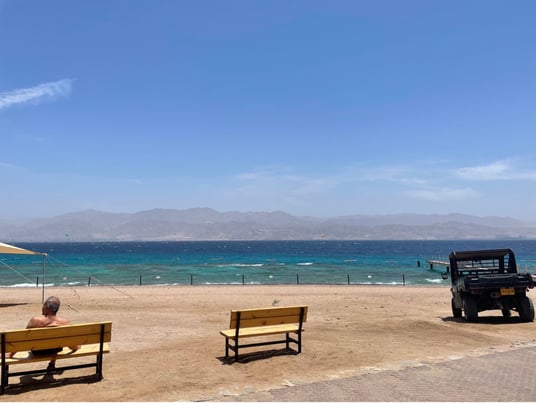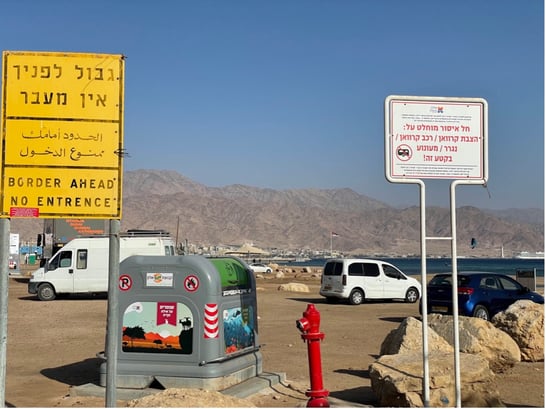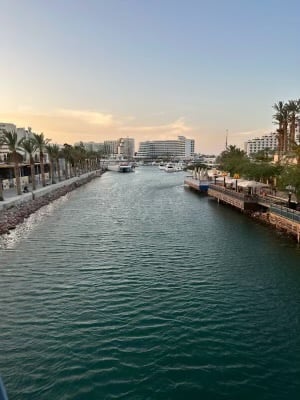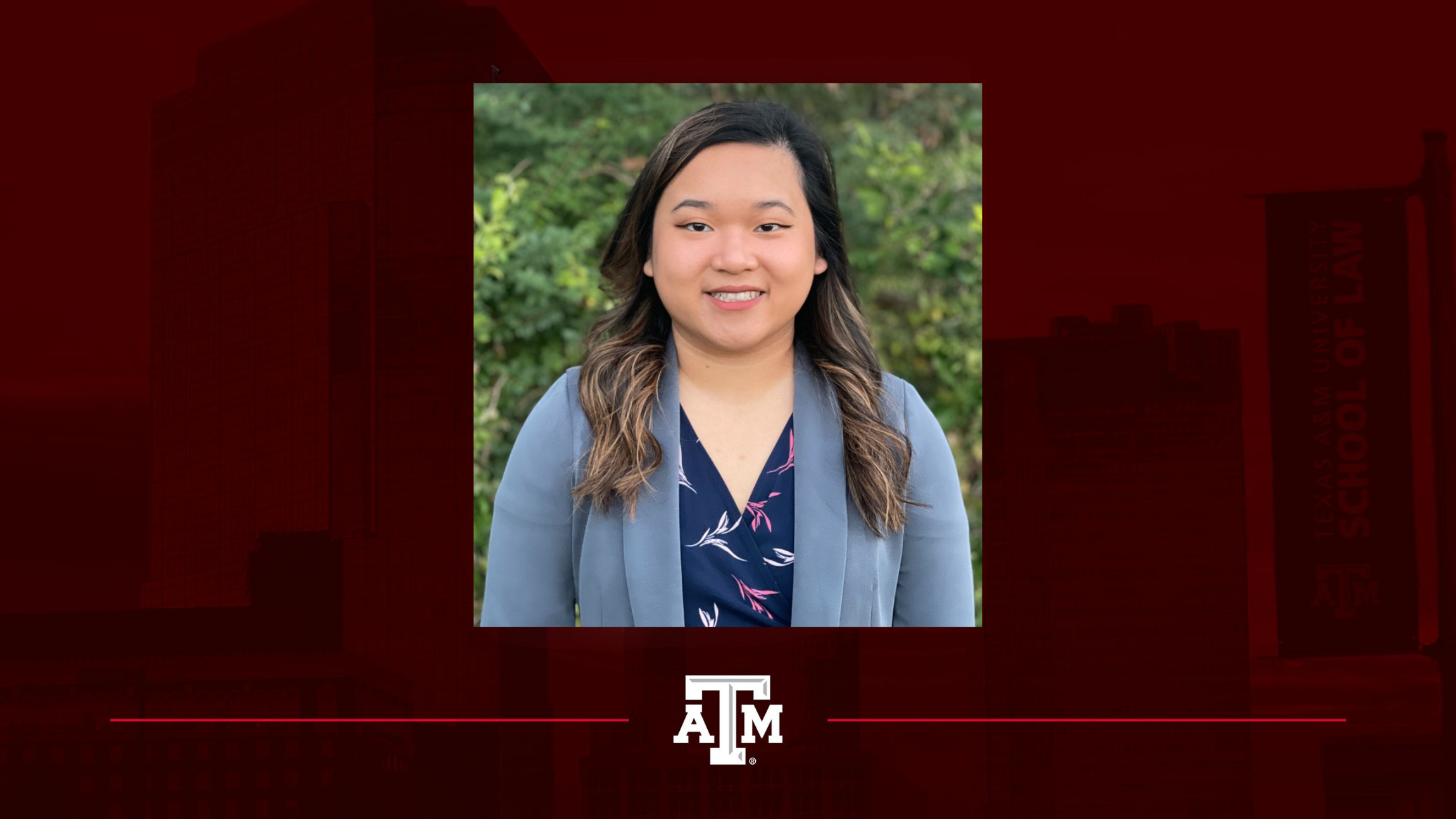Day Nine – Israel: Imparting Knowledge from the Red Sea
By: Tiana Pham '25
This article is part of a series of reflections prepared by students enrolled in the Texas A&M School of Law 2023 Global Field Studies Program: Israel. Click here to visit the entire series
Like many other students affected by COVID-19, I wanted to, but could not, travel abroad during college. I decided to make it one of my goals before graduating law school to go on one of Texas A&M’s field courses, and I am so glad I did.
While in the Negev Desert, we swam and snorkeled in the Red Sea. It was stunning to see how well-kept and beautiful this area was, even though it is plagued by environmental concerns such as overfishing and marine habitat destruction. Our group was able to learn about how the Red Sea is an anomaly because its coral reef is not bleaching like the rest of the world’s. The thriving coral reef created a habitat where only the most capable marine life could survive. With the opening of the Suez Canal in 1869, some of these species were able to cross into the Mediterranean Sea, destroying and modifying ecosystems where they settled. Our speaker (and snorkeling tour guide) also explained the competing interests of corporations and environmental protections in the region. We specifically learned about the Coral World Underwater Observatory, a privately owned site where visitors can experience the marine life in the Red Sea. Our speaker told us that while the observatory’s purpose is to educate the public about marine life, it also harmed the environment by taking marine life directly from the Red Sea. For example, the observatory has coral in the aquarium to create awareness of the potential for bleaching in the area, but if that coral dies the observatory can simply go to the Red Sea and break off another piece to replace it. Environmental protection groups have protested the observatory because of these practices. However, from the lecture, we were left with the impression that both interests were necessary for the Red Sea to continue thriving. Corporations use the revenue earned to put back into environmental conservation, public education, and awareness. Alongside corporations, environmental groups work hard to protect the marine life in the area through their research and policy advocacy.

The Red Sea with Jordan in the background (with the Jordanian flag far in the back).
 Israel-Jordan Border Signs
Israel-Jordan Border Signs
As beautiful and pleasant as this experience is, Israelis are constantly reminded of the issues surrounding them. Across the Red Sea is Jordan. Part of our group went to Eilat, a nearby tourist town, after visiting the Red Sea. The town was the most familiar place that we visited because it is a popular tourist destination. There were shopping malls and a pier. It felt like we were at a tourist beach in Florida. There, we walked close to the border of Jordan. It is not hard to see why so many conflicts arise when scarce resources are shared in a region with countries so close together.


Pictures of Eilat at sunset
Going to Israel was a lesson of a lifetime in and of itself. I learned so much about the environmental struggles that the country is facing because of its arid nature, the tightly controlled borders and animosity between neighboring countries, and most importantly, how Israelis can experience the Red Sea the way our group did, but Palestinians cannot.
While in Israel, we saw the tensions and differences in treatment between Israeli Jews and Arab Muslims. From the fences around schools for Arab Muslim children to the heavily militarized border checkpoints that we witnessed throughout the trip, it was obvious that the Palestinians and Bedouins (both Arab Muslims) were segregated and discriminated against. For example, while in the West Bank, we saw a boy who seemed to be about thirteen years old being questioned by heavily armed Israeli military guards near a place where Palestinians had family outings. This area, in contrast to the beautiful Red Sea that we and many Israelis get to experience, was extremely run down, polluted, and dirty. We also passed through a border checkpoint staffed by Israeli soldiers while exiting the West Bank. We were not given trouble in passing through borders other than opening the van door for the soldiers to peek inside and leave. We learned from our speakers on the trip that Arab Muslims would likely have a more difficult time at checkpoints like these. I am grateful for the experience that I was able to have in Israel, but it does not escape me that while I was enjoying the country, Palestinians are fighting to be heard and treated equitably in a country that shuns their existence.
Learn more about Texas A&M University School of Law's Global Law and Policy Program, Aggie Dispute Resolution Program, and Energy, Environmental, and Natural Resource Systems Law Program
